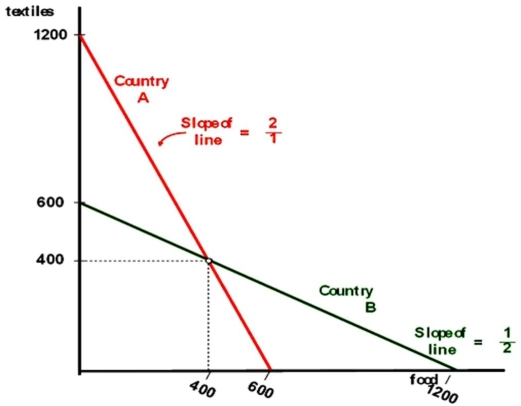Multiple Choice
Counties A and B currently consume 400 units of food and 400 units of textiles each and currently do not trade with one another.The citizens of country A have to give up one unit of food to gain two units of textiles,while the citizens of country B have to give up one unit of textiles to gain two units of food.Their production possibilities curves are shown.  Under the theory of comparative advantage,if free trade is allowed,the market clearing price (or exchange rate,if you will) between food and textiles will be
Under the theory of comparative advantage,if free trade is allowed,the market clearing price (or exchange rate,if you will) between food and textiles will be
A) one unit of food for one unit of textiles.
B) somewhere between one unit of food for two units of textiles and two units of food for one unit of textiles.
C) one unit of food for two units of textiles.
D) two units of food for one unit of textiles.
Correct Answer:

Verified
Correct Answer:
Verified
Q40: A true MNC,with operations in dozens of
Q41: The theory of comparative advantage<br>A)claims that economic
Q42: A purely domestic firm that sources its
Q43: What major dimension sets apart international finance
Q44: Undoubtedly,we are now living in a world
Q46: The first two columns give the
Q47: The owners of a business are the<br>A)taxpayers.<br>B)workers.<br>C)suppliers.<br>D)shareholders.
Q48: In countries like France and Germany,<br>A)managers have
Q49: In modern times,it is not a country
Q50: International trade is<br>A)a "zero-sum" game in which